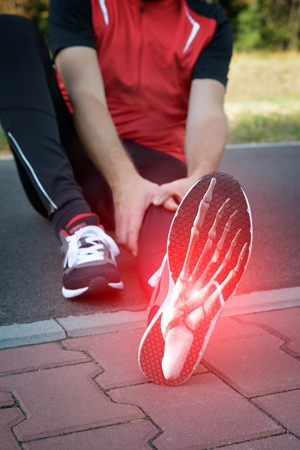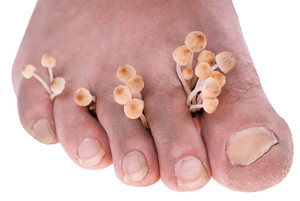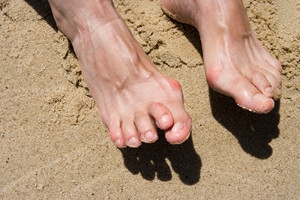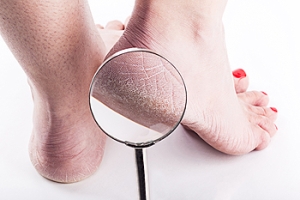Connect With Us

All About Stress Fractures
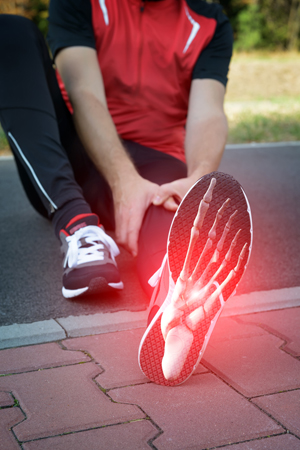 When runners develop stress fractures, they typically occur in the lower fibula and parts of the tibia. Stress fractures are a type of bone injury that occurs as a result of repetitive mechanical stress. Activities such as jumping and running can result in a stress fracture. If you are looking to treat your stress fracture, you should start by ceasing any high-impact activities and start to participate in cross-training activities. Cross-training is an exercise regimen that incorporates several modes of training to avoid overuse injuries. People who experience pain from walking with a stress fracture should look toward wearing a cast, boot, or crutches. Most athletes who suffer from stress fractures may gradually return to running within six to eight weeks. Training schedules, diet, and menstrual history are all factors that may increase your risk of developing a stress fracture.
When runners develop stress fractures, they typically occur in the lower fibula and parts of the tibia. Stress fractures are a type of bone injury that occurs as a result of repetitive mechanical stress. Activities such as jumping and running can result in a stress fracture. If you are looking to treat your stress fracture, you should start by ceasing any high-impact activities and start to participate in cross-training activities. Cross-training is an exercise regimen that incorporates several modes of training to avoid overuse injuries. People who experience pain from walking with a stress fracture should look toward wearing a cast, boot, or crutches. Most athletes who suffer from stress fractures may gradually return to running within six to eight weeks. Training schedules, diet, and menstrual history are all factors that may increase your risk of developing a stress fracture.
Stress fractures occur when there is a tiny crack within a bone. To learn more, contact Dr. Michael D. Garvin from Florida. Our doctor can provide the care you need to keep you pain free and on your feet.
How Are They Caused?
Stress fractures are the result of repetitive force being placed on the bone. Since the lower leg and feet often carry most of the body’s weight, stress fractures are likely to occur in these areas. If you rush into a new exercise, you are more likely to develop a stress fracture since you are starting too much, too soon. Pain resulting from stress fractures may go unnoticed at first, however it may start to worsen over time.
Risk Factors
- Gender – They are more commonly found in women compared to men.
- Foot Problems – People with unusual arches in their feet are more likely to develop stress fractures.
- Certain Sports – Dancers, gymnasts, tennis players, runners, and basketball players are more likely to develop stress fractures.
- Lack of Nutrients – A lack of vitamin D and calcium may weaken the bones and make you more prone to stress fractures
- Weak Bones – Osteoporosis can weaken the bones therefore resulting in stress fractures
Stress fractures do not always heal properly, so it is important that you seek help from a podiatrist if you suspect you may have one. Ignoring your stress fracture may cause it to worsen, and you may develop chronic pain as well as additional fractures.
If you have any questions, please feel free to contact our offices located in Port St. Lucie, FL . We offer the newest diagnostic and treatment technologies for all your foot care needs.
Dealing with Stress Fractures of the Foot and Ankle
Stress fractures are small breaks in the bone that are caused by repetitive stress. They typically occur due to overuse, forcing the bones of the foot or ankle to continually absorb the full impact of each step taken. Stress fractures can also be caused by abnormal foot structure, osteoporosis, bone deformities, or wearing improper footwear during exercise.
Stress fractures are common for individuals whose daily activities cause high levels of impact on their feet and ankles. Those who run, play tennis or basketball, or practice gymnastics tend to experience these fractures more frequently. Anyone is susceptible to this problem, though. Individuals who are normally sedentary and suddenly begin an intense, high impact workout may sustain stress fractures. This is because their muscles are not yet strong enough to handle and cushion the intensity of their activity. Osteoporosis may also cause someone to get stress fractures, because the disease weakens an afflicted person's bones and makes it easier for them to break down.
Pain from stress fractures typically occurs in the general area of the fracture. Pain can also manifest as “pinpoint pain” or pain that is felt when the site of the injury is touched, and can be accompanied by swelling. It may occur during or after activity, and it may disappear while resting and return when standing or moving. Engaging in any kind of activity, high impact or otherwise, will aggravate the pain. If the intensity of the activity increases before the stress fracture has properly healed, it can cause a full fracture.
Treatment can vary depending on the individual and the degree of injury. The primary way to treat a stress fracture is to rest the hurt foot. Some fractures will heal quickly with only a little bit of rest, while others may require a long rest period and the use of crutches, immobilization, or physical therapy. Under certain circumstances, surgery may be required to install support pins around the fracture to assist in healing.
If you are undergoing a new exercise regimen in running or some other kind of high impact activity, set incremental goals on a weekly basis so you can build up muscle strength. Make sure to wear supportive shoes to better protect you feet.
If you begin to experience any symptoms of stress fractures, you should stop exercising and rest. If the symptoms persist, consult with your podiatrist. Remembering these tips can help you prevent stress fractures to your foot and ankle, and allow you to continue living normally.
Is Athlete's Foot Contagious?
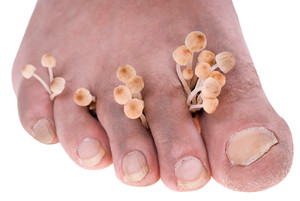 Athlete’s foot is a common foot condition that many people experience. It typically affects the area between the toes in addition to the bottom of the feet. There are several symptoms that are associated with this ailment. These may include redness, dry areas in the affected portions of skin, or extreme itchiness. This contagious fungal infection is generally found in public places, which may include community pools, shower room floors, and surrounding areas. Patients who have certain existing medical conditions may have an increased risk of getting athlete’s foot. These include a weak immune system, eczema, or certain allergies. Mild relief can be found while using an anti-fungal spray. For stubborn and severe cases of athlete’s foot, it is strongly suggested that you consult with a podiatrist who can properly treat your condition.
Athlete’s foot is a common foot condition that many people experience. It typically affects the area between the toes in addition to the bottom of the feet. There are several symptoms that are associated with this ailment. These may include redness, dry areas in the affected portions of skin, or extreme itchiness. This contagious fungal infection is generally found in public places, which may include community pools, shower room floors, and surrounding areas. Patients who have certain existing medical conditions may have an increased risk of getting athlete’s foot. These include a weak immune system, eczema, or certain allergies. Mild relief can be found while using an anti-fungal spray. For stubborn and severe cases of athlete’s foot, it is strongly suggested that you consult with a podiatrist who can properly treat your condition.
Athlete’s foot is an inconvenient condition that can be easily reduced with the proper treatment. If you have any concerns about your feet and ankles, contact Dr. Michael D. Garvin from Florida. Our doctor will treat your foot and ankle needs.
Athlete’s Foot: The Sole Story
Athlete's foot, also known as tinea pedis, can be an extremely contagious foot infection. It is commonly contracted in public changing areas and bathrooms, dormitory style living quarters, around locker rooms and public swimming pools, or anywhere your feet often come into contact with other people.
Solutions to Combat Athlete’s Foot
- Hydrate your feet by using lotion
- Exfoliate
- Buff off nails
- Use of anti-fungal products
- Examine your feet and visit your doctor if any suspicious blisters or cuts develop
Athlete’s foot can cause many irritating symptoms such as dry and flaking skin, itching, and redness. Some more severe symptoms can include bleeding and cracked skin, intense itching and burning, and even pain when walking. In the worst cases, Athlete’s foot can cause blistering as well. Speak to your podiatrist for a better understanding of the different causes of Athlete’s foot, as well as help in determining which treatment options are best for you.
If you have any questions please feel free to contact our offices located in Port St. Lucie, FL . We offer the newest diagnostic and treatment technologies for all your foot and ankle needs.
Athlete’s Foot
Athlete’s foot, or tinea pedis, is a skin disease caused by a fungal infection. The infection typically occurs between the toes, and the feet are most subject to this disease because shoes best create the warm, dark, and moist environment in which fungus thrives. Other areas that create a similar environment, such as swimming pools, public showers, and locker rooms; can also promote fungi growth.
Symptoms of athlete’s foot include dry skin, itching, scaling, inflammation, and blistering. Sometimes, blisters can evolve into the cracks or breaks in the skin. The exposed tissue can then create pain, swelling, and discharge. The spread of infection can cause itching and burning as well.
While athlete’s foot commonly occurs between the toes, it may also spread to the toenails or soles of the feet. Other parts of the body, such as the groin or underarms, can also become infected if they are touched after the original area of infection is scratched. Aside from physical contact, athlete’s foot can also spread through the contamination of footwear, clothing or bedsheets.
Proper foot hygiene is essential in preventing athlete’s foot. You can prevent the fungus from spreading by frequently washing your feet using soap and water, thoroughly drying the feet between the toes, changing shoes and socks every day to reduce moisture, and ensuring that bathroom and shower floors are disinfected. Other tips include using shower shoes, avoiding walking barefoot in public environments, wearing light and airy shoes, and wearing socks that keep the feet dry.
While treatment for athlete’s foot can involve topical or oral antifungal drugs, mild cases of the infection can be treated by dusting foot powder in shoes and socks. Any treatment used can be supplemented by frequently bathing the feet and drying the toes. If proper foot hygiene and self-care do not ease your case of athlete’s foot, contact your podiatrist. He will determine if the underlying cause of your condition is truly a fungus. If that is the case, a comprehensive treatment plan may be suggested with the inclusion of prescription antifungal medications.
What Toe Does Hammertoe Typically Affect?
 The medical condition known as hammertoe typically affects the second toe. It is defined as a bone deformity that causes the toe to bend in a downward position. The affected joint can become stiff and enlarge if it should rub against the shoes. A common reason why hammertoe would develop can include wearing shoes that do not have adequate room for the toes to move freely in. The tendons in the toe may become shortened as a result of wearing these types of shoes, and the patient may experience muscle balance. Mild relief may be found when stretching exercises are frequently performed. This is beneficial in lengthening the tendons that may be tight. Some patients find it can help to wear orthotics, which aid in supporting the arch. If you have developed hammertoe, it is advised that you seek the counsel of a podiatrist who can guide you in beginning the correct treatment.
The medical condition known as hammertoe typically affects the second toe. It is defined as a bone deformity that causes the toe to bend in a downward position. The affected joint can become stiff and enlarge if it should rub against the shoes. A common reason why hammertoe would develop can include wearing shoes that do not have adequate room for the toes to move freely in. The tendons in the toe may become shortened as a result of wearing these types of shoes, and the patient may experience muscle balance. Mild relief may be found when stretching exercises are frequently performed. This is beneficial in lengthening the tendons that may be tight. Some patients find it can help to wear orthotics, which aid in supporting the arch. If you have developed hammertoe, it is advised that you seek the counsel of a podiatrist who can guide you in beginning the correct treatment.
Hammertoe
Hammertoes can be a painful condition to live with. For more information, contact Dr. Michael D. Garvin from Florida. Our doctor will answer any of your foot- and ankle-related questions.
Hammertoe is a foot deformity that affects the joints of the second, third, fourth, or fifth toes of your feet. It is a painful foot condition in which these toes curl and arch up, which can often lead to pain when wearing footwear.
Symptoms
- Pain in the affected toes
- Development of corns or calluses due to friction
- Inflammation
- Redness
- Contracture of the toes
Causes
Genetics – People who are genetically predisposed to hammertoe are often more susceptible
Arthritis – Because arthritis affects the joints in your toes, further deformities stemming from arthritis can occur
Trauma – Direct trauma to the toes could potentially lead to hammertoe
Ill-fitting shoes – Undue pressure on the front of the toes from ill-fitting shoes can potentially lead to the development of hammertoe
Treatment
Orthotics – Custom made inserts can be used to help relieve pressure placed on the toes and therefore relieve some of the pain associated with it
Medications – Oral medications such as anti-inflammatories or NSAIDs could be used to treat the pain and inflammation hammertoes causes. Injections of corticosteroids are also sometimes used
Surgery – In more severe cases where the hammertoes have become more rigid, foot surgery is a potential option
If you have any questions please contact our offices located in Port St. Lucie, FL . We offer the newest diagnostic and treatment technologies for all your foot and ankle needs.
Hammertoe
Hammertoe is a foot deformity that occurs due to an imbalance in the tendons, muscles, or ligaments that are responsible for holding the toes in their normal position. This condition may be caused by poor footwear, foot structure, trauma, and disease. The most common solution for hammertoe is to relieve the pain by changing your footwear and wearing orthotics. In severe cases, surgery may be required.
The shoes that are most likely to cause hammertoe are high heeled shoes or shoes that are too tight in the toe box. Tight shoes will force your toes to crowd together in a curled position. This position will likely continue when you take your shoes off. Another cause is trauma. When you stub your toe, you are increasing the chance that you will develop hammertoe.
There are risk factors that may make you more likely to develop this condition. Women are more likely to have the condition compared to men, and it is also more likely to appear in those who are older in age.
Many different foot problems can be avoided by wearing shoes that have adjustability, adequate toe room, and low heels. Furthermore, if you want to buy new shoes, you should look to purchase them at the end of the day and make sure you know your correct size. The importance of buying shoes at the end of the day is that your feet swell as the day progresses. You should also ensure that you are wearing your correct size because your shoe size may change as you grow older.
To diagnose someone with hammertoe, your podiatrist will need to conduct a thorough examination of your foot. Your doctor may even order an x-ray to evaluate the bones and joints of your feet and toes.
If you have hammertoe, your podiatrist may recommend that you wear shoes that fit you better along with inserts to place inside them. Additionally, he or she may suggest special exercises for you to perform to stretch your toes. One helpful exercise it to pick up marbles with your feet or crumple a towel with your toes.
Prior to meeting with your podiatrist, it will be helpful to make a list of all the symptoms you are experiencing. You should also make a note of medications you are taking and important personal information about your medical history.
What Causes Cracked Heels?
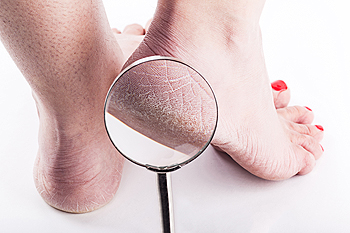 Research has indicated that cracked heels affect more than fifty percent of the world's population. This condition may be a result of wearing shoes that have an open back, or from standing for long periods of time throughout the day. The skin may lose its elasticity, and can gradually develop deep cracks, which are also known as fissures. It may be beneficial to stretch the Achilles tendon before the day begins. This may help to ease the amount of weight the heels absorb as walking occurs. Patients may find relief when their feet are washed and thoroughly dried, followed by applying a good moisturizer. Additionally, cracked heels may be prevented when shoes are worn that offer adequate support for the heels. If you have any questions about effective remedies for this condition, it is suggested that you seek the counsel of a podiatrist.
Research has indicated that cracked heels affect more than fifty percent of the world's population. This condition may be a result of wearing shoes that have an open back, or from standing for long periods of time throughout the day. The skin may lose its elasticity, and can gradually develop deep cracks, which are also known as fissures. It may be beneficial to stretch the Achilles tendon before the day begins. This may help to ease the amount of weight the heels absorb as walking occurs. Patients may find relief when their feet are washed and thoroughly dried, followed by applying a good moisturizer. Additionally, cracked heels may be prevented when shoes are worn that offer adequate support for the heels. If you have any questions about effective remedies for this condition, it is suggested that you seek the counsel of a podiatrist.
Cracked heels are unsightly and can cause further damage to your shoes and feet. If you have any concerns, contact Dr. Michael D. Garvin from Florida. Our doctor can provide the care you need to keep you pain-free and on your feet.
Cracked Heels
Cracked heels appear unappealing and can make it harder for you walk around in sandals. Aside from looking unpleasant, cracked heels can also tear stockings, socks, and wear out your shoes. There are several methods to help restore a cracked heel and prevent further damage.
How Do You Get Them?
Dry skin is the number one culprit in creating cracked heels. Many athletes, walkers, joggers, and even swimmers suffer from cracked heels. Age and skin oil production play a role to getting cracked heels as well.
Promote Healing
Over the counter medicines can help, especially for those that need instant relief or who suffer from chronic dry feet.
Wear Socks – Wearing socks with medicated creams helps lock in moisture.
Moisturizers – Applying both day and night will help alleviate dryness which causes cracking.
Pumice Stones – These exfoliate and remove dead skin, which allows for smoother moisturizer application and better absorption into the skin.
Change in Diet
Eating healthy with a well-balanced diet will give the skin a fresh and radiant look. Your body responds to the kinds of food you ingest. Omega-3 fatty acids and zinc supplements can also revitalize skin tissue.
Most importantly, seek professional help if unsure how to proceed in treating cracked heels. A podiatrist will help you with any questions or information needed.
If you have any questions, please feel free to contact our offices located in Port St. Lucie, FL . We offer the newest diagnostic and treatment technologies for all your foot care needs.
Solutions for Cracked Heels
Cracked heels may make you want to think twice about showing off your feet in warmer weather. However, cracked heels may be harmful to more than just the appearance of your feet. If deep fissures and cracks develop in your heels, they may make walking and standing painful for you. Additionally, these openings make way for germs to enter through your skin and cause infection.
There are several different causes of cracked heels. One of the most common reasons for this ailment is dry skin. This problem may make your keeps feel rough tight and itchy. Dry skin may be caused by cold air, extremely hot water, harsh soaps, and aging. Skin disorders such as eczema and psoriasis may eventually lead to dry skin. In some cases, complications may arise from cracked heels. Some of these complications are a loss of feeling in the heel, cellulitis, or a diabetic foot ulcer.
There are ways you can try to prevent getting cracked heels. One of the best ways to do so is to avoid wearing flip flops and sandals because these shoes increase your risk of drying out your feet. You should also avoid wearing shoes with a tall skinny heel, because these shoes cause your heel to expand sideways. At night, you should slather on a thick moisturizing cream on your feet and then cover them in socks to keep your feet moisturized overnight. Drinking water to stay hydrated is also a good way to ensure that your skin doesn’t become dry.
If you suffer from a severe case of cracked feet, you should make an appointment with your podiatrist to see what treatment methods are best for you.
Can Stretching the Feet Prevent Foot Injuries?
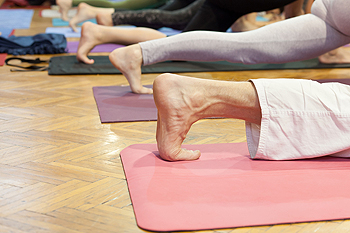 The majority of impact the body feels while running is absorbed by the feet. Many people who enjoy running stretch before and after a run is completed, and research has shown it is just as important to perform stretching techniques for the feet. There are a variety of stretches that can be practiced which may help in preventing unwanted foot conditions from developing. These can include stretching the Achilles tendon which is done by standing on a step, and gently lowering one heel at a time. Toe stretches are performed by grabbing a towel with your toes while standing, and this helps to strengthen the entire foot. The sole of the foot can feel better when the plantar fascia is stretched by rolling the foot on a tennis ball. For additional information about the importance of stretching your feet, it is suggested that you consult with a podiatrist.
The majority of impact the body feels while running is absorbed by the feet. Many people who enjoy running stretch before and after a run is completed, and research has shown it is just as important to perform stretching techniques for the feet. There are a variety of stretches that can be practiced which may help in preventing unwanted foot conditions from developing. These can include stretching the Achilles tendon which is done by standing on a step, and gently lowering one heel at a time. Toe stretches are performed by grabbing a towel with your toes while standing, and this helps to strengthen the entire foot. The sole of the foot can feel better when the plantar fascia is stretched by rolling the foot on a tennis ball. For additional information about the importance of stretching your feet, it is suggested that you consult with a podiatrist.
Stretching the feet is a great way to prevent injuries. If you have any concerns with your feet consult with Dr. Michael D. Garvin from Florida. Our doctor will assess your condition and provide you with quality foot and ankle treatment.
Stretching the Feet
Stretching the muscles in the foot is an important part in any physical activity. Feet that are tight can lead to less flexibility and make you more prone to injury. One of the most common forms of foot pain, plantar fasciitis, can be stretched out to help ease the pain. Stretching can not only ease pain from plantar fasciitis but also prevent it as well. However, it is important to see a podiatrist first if stretching is right for you. Podiatrists can also recommend other ways to stretch your feet. Once you know whether stretching is right for you, here are some excellent stretches you can do.
- Using a foam roller or any cylindrical object (a water bottle or soda can will do), roll the object under your foot back and forth. You should also exert pressure on the object. Be sure to do this to both feet for a minute. Do this exercise three times each.
- Similar to the previous one, take a ball, such as a tennis ball, and roll it under your foot while seated and exert pressure on it.
- Grab a resistance band or towel and take a seat. If you are using a towel, fold it length wise. Next put either one between the ball of your foot and heel and pull with both hands on each side towards you. Hold this for 15 seconds and then switch feet. Do this three times for each foot.
- Finally hold your big toe while crossing one leg over the other. Pull the toe towards you and hold for 15 seconds. Once again do this three times per foot.
It is best to go easy when first stretching your foot and work your way up. If your foot starts hurting, stop exercising and ice and rest the foot. It is advised to then see a podiatrist for help.
If you have any questions, please feel free to contact our offices located in Port St. Lucie, FL . We offer the newest diagnostic and treatment technologies for all your foot care needs.
How to Stretch Your Feet
Your feet endure a great amount of stress each day from constantly allowing us to move around. It is important to stretch your feet to help prevent them from becoming injured. Your toes may easily deform into unhealthful positions if they are not stretched.
One of the most common reasons for toe deformities are the shoes you may be wearing. Shoes that are too tight may fold and shift the toes out of place. Heeled shoes may also push your toes upward. Forcing your toes into an unnatural position which may cause the muscles to tighten and prevent them from reverting to normal length. Another common reason is improper use of foot muscles. Many people fail to use the muscles in their feet or toes when they walk. Lastly, the positioning of your feet while walking may also cause toe deformities. If you walk with your feet facing outward, your “push-off” phase is on the side of your big toe instead of the bottom of your foot. This may cause the big toe to eventually tighten into a new shifted position.
There are many reasons why stretching your toes may be helpful. One reason is that healthy spacing may aid in avoiding calluses and other injuries that are caused by rubbing. Stretching will also prevent you from developing toes that curl, hammertoes, or bunions.
A great way to stretch your toes is to place them in your hands and bend them all downward; this will help you stretch the top of your foot. Next, you should repeat this process but instead bend them upward enough to feel a nice stretch in the bottom of your foot. You should then try to pull each toe apart from the next and pull any toes that are bent upward until they are back downward.
If you are looking to practice stretching your entire foot, you can try a towel stretch. This is done by sitting on the floor with your legs in front of you. Take a towel and wrap it around your toes. Afterward, pull the towel toward you with your toes and hold this position for 15 to 30 seconds before releasing. Practice this stretch for three sets. Another stretch your feet are towel lifts. This is done by sitting in a chair and trying to pick a towel up from the ground with your toes. Try lifting the towel with your little toes for five sets before switching feet.
If you are an athlete, or exercise often, it is especially important for you to practice stretching your feet. Those who suffer from foot pain caused by poor footwear, plantar fasciitis, or long hours of standing at work may also benefit from foot exercises.
